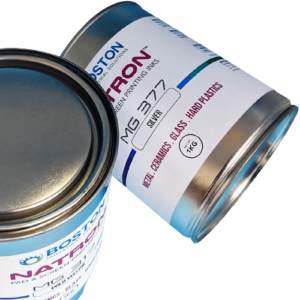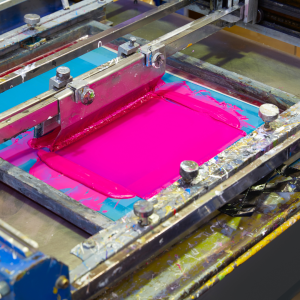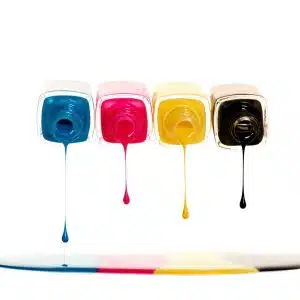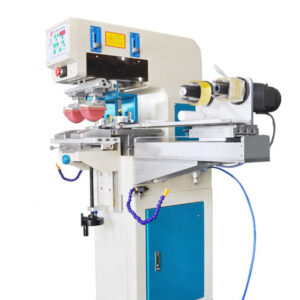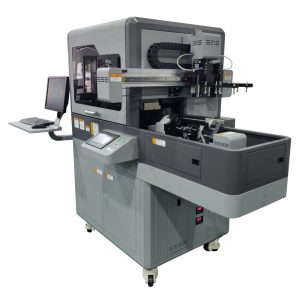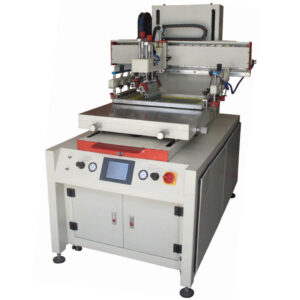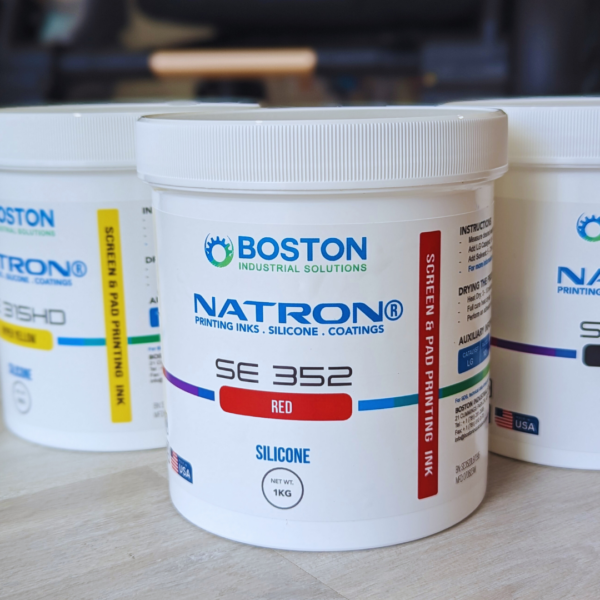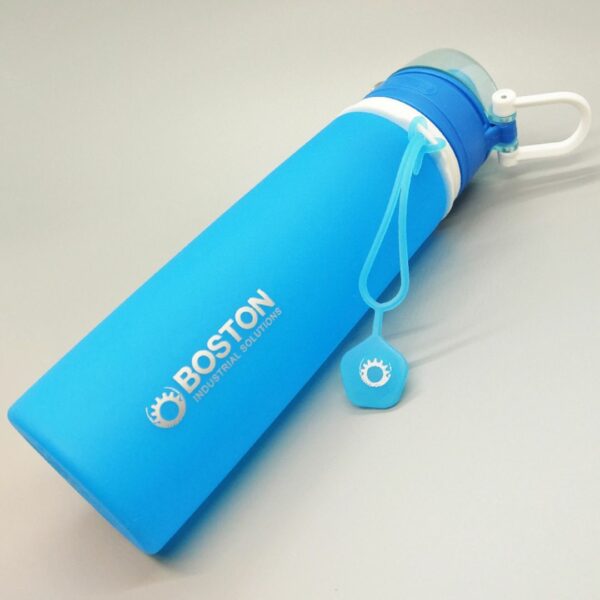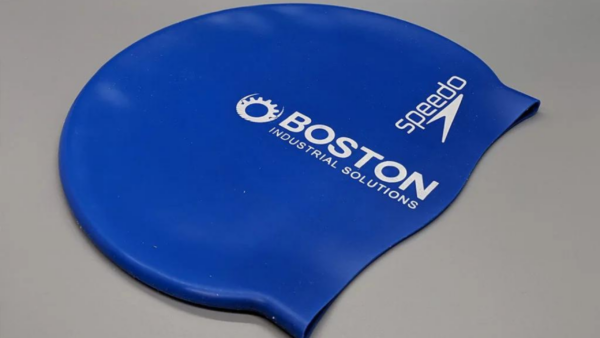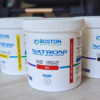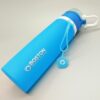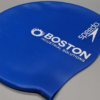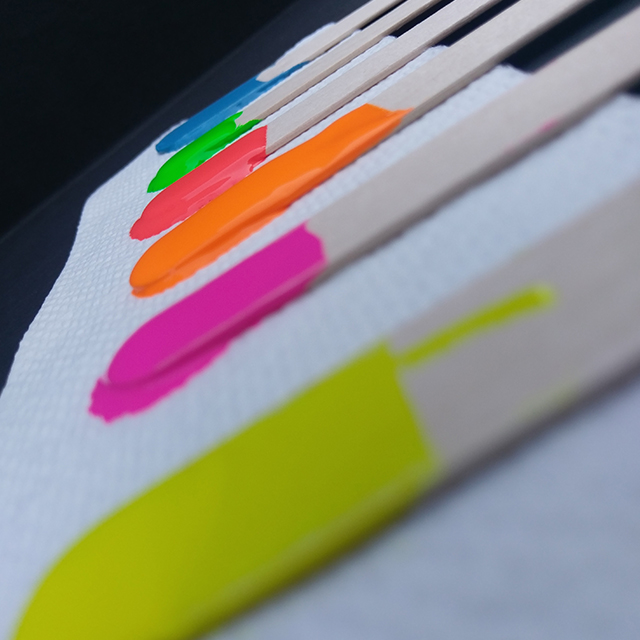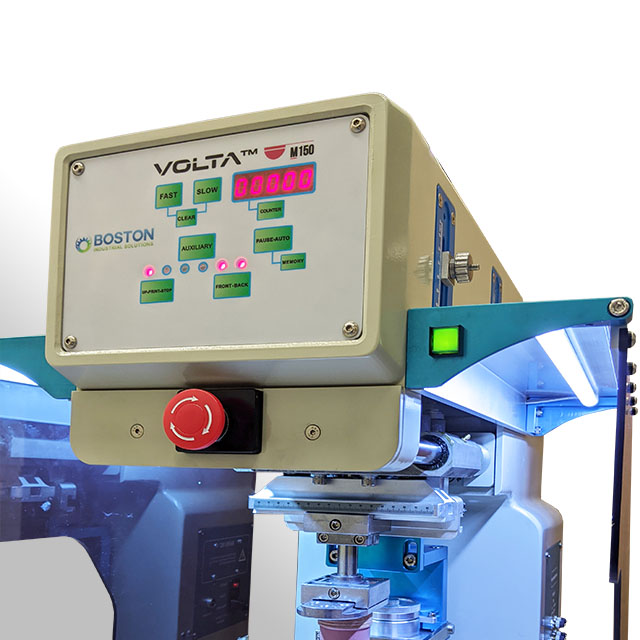SILICONE INK FOR PRINTING SILICONE RUBBER
SE Series pad printing ink is the only ink used to print on silicone rubber parts. There are several ways to apply this ink series, which include screen color-filling, spray coating, or pad printing.
SE rubber printing ink for silicone is a two-part silicone ink for printing on parts made of silicone rubber. This ink is applied via pad printing, screen printing, or spray coating silicone rubber parts. Some of the key features include high opacity, high gloss, extreme flexibility, and exceptional resistance to abrasion. Additionally, this silicone ink is dishwasher safe. It will withstand alkali chemicals and gasoline.
Examples of silicone rubber products include custom silicone wristbands and swimming caps. Various industries utilize this silicone ink for printing on silicone rubber parts, including promotional, medical, toys, drinkware, aerospace, and industrial applications. Industrial application examples include silicone handles for tools, automotive hoses, silicone-coated fiberglass, etc. Other industries that use this ink include aerospace, automotive, promotional, medical, toys, drinkware, and custom silicone molding industries. Read about the top 5 ink applications for printing on silicone with silicone ink.
Silicone-based ink is the only ink that will stick to silicone. For this reason, the SE pad printing silicone ink is made of silicone. Once cured, this ink becomes part of the silicone. It will bend, stretch, and flex with silicone product. Additionally, it can withstand any high temperatures that silicone can.
The Natron SE ink is also designed for ease of use. It is available in 37 high-opacity colors, including three metallic and six neon hues—it is the only silicone ink line with these hues in the world.
Silicone Ink SE must be baked at 275°F – 400°F for 6 – 30 minutes depending on the density of the silicone substrates.
Product properties
- Ink system: silicone-based, 2-component
- Drying: Heat cure
- Degree of gloss: very high
- Opacity: high opacity
- Outdoor resistance: excellent
- Abrasion and chemical resistance: excellent
Ink mixing, printing & curing
To print your product, mix the silicone ink (A) with the LG catalyst (B), print, and cure the product. For every 10 parts of the ink (A), add 1 part of the catalyst (B). Mix the ink and the catalyst. Add 5–60% of the SE-TRM solvent to alter the viscosity. To dry and cure the printed product, use heat. Put the printed product in an oven for 5–10 minutes at 200–250°F (6 minutes at 250°F). (Safety caution! (Wait for the heated product to cool down before touching.)
After a full cure, try to bend, scratch, or stretch the printed product. We guarantee that the print (ink) will not crack or rub off—the print becomes part of the product. This is the reason the SE series silicone ink is perfect for printing on silicone rubber products.
Solvents: Use TRM, TXM, or SF solvents to alter the viscosity. This is if the mixed ink is too thick for a specific application. The SF silicone ink solvent is a fast-drying thinner, while the SE-TRM has slow evaporation. Both ink solvents are environmentally friendly.
Attention:
If you use any other solvents with the SE inks, it will affect the printing quality and adhesion of the ink.
Drying: Printed parts dry at 200–250 °F for 2–8 minutes.
Caution: Silicone rubber inks are compatible with many types of silicone rubber. However, contact with some substrates will inhibit the drying of silicone ink. We recommend that you always do a small-scale compatibility test before full production. Learn how to print on silicone rubber.
Multi color printing with silicone ink
The SE Series silicone inks are the only inks in the world capable of multi-color printing. Most people print one-color images onto silicone. The reason is that multicolor jobs are very cumbersome because you have to completely cure one color in the oven before printing another. This is not the case with Natron SE series inks. With Natron ink for printing silicone rubber, you can print up to four colors at a time. There is no need to print one color at a time. With pad printing, the Natron SE Series allows you to print multiple colors at a time.
The SE series ink line is the most advanced silicone ink series in the world. It offers decorators versatility and efficiency.
Call us for more information: +1 (781) 281 2558
Compliance
CPSIA stands for the Consumer Product Safety Improvement Act. Boston Industrial Solutions, Inc. was awarded this certificate as a symbol of compliance for its inks. This, in turn, should give you printing confidence. We make the best silicone ink in the world. In addition, our goal is to make the best and safest inks for the industry, now and in the future. The purpose of this is twofold.
- to formulate an ink that is safe for printers.
- Make ink that is safe for recipients of the final product.
But first, let us discuss CPSIA certification. “CPSIA certification” means the issuance of a written Children’s Product Certificate (CPC) in which the manufacturer certifies that its children’s product complies with all applicable children’s product safety rules (or similar rules, bans, standards, or regulations under any law enforced by the Commission for that product.)
Third party testing is the basis of children’s product certification. Upon passing the test of third-party testing, the third-party testing laboratory provides the results and certification. However, it does not issue the children’s product certificate.
Click here to find Natron SE Silicone Ink Compliance Report for 2019.
USP MEM Elution Cytotoxicity certification
The Natron SE Pad printing ink has USP MEM Elution Cytotoxicity certification. This certification indicates that the silicone inks meets the requirements of the test and are not considered to have a cytotoxic effect. The study is conducted to determine Biological reactivity (cellular degeneration and malformation) on a scale from Grade 0 (No Reactivity) to Grade 4 (Severe Reactivity). The Natron™ SE Silicone inks got a grade of 0 – No Reactivity! Discrete intracytoplasmic granules; no cell lysis.
Silicone ink printing challenges
Today, there are many problems with silicone printing. This is because printing on silicone poses many challenges to professional printers. As a result, the printing experts have many questions. Boston Industrial Solutions, Inc. has come up with innovative solutions. First, let’s explore the challenges and finally offer solutions to these challenges.
The challenges
Some of the key challenges when printing on silicone are:
- Paste ink/pastry ink: These inks need to be heavily thinned for the customer to be able to use them. In essence, the customer is actually making the ink. This lowers productivity. Also, because the inks are a paste, mixing and color matching pose challenges for printers. Users of the silicone ink have to heavily rely on ink manufacturers for custom colors. This is time-consuming, not to mention the long lead time and customer color matching fees.
- Translucent or not-opaque ink: According to photoscreenprint, ink opacity affects the ability of colors to blend with each other as well as how much of the substrate shows through the print. The more opaque an ink is, the better it will cover a dark garment. When pad printing with transparent inks, it is not possible to obtain opaque prints. As a result, printers have to double hit a print. This not only slows down productivity but also increases ink usage.
- Lack of glossy printing ink—This impacts the final customer. Unhappy customers translate to bad reviews or lost revenue for printers.
- Consistent ink quality: the current inks in the industry vary in particle sizes and color consistency in every batch. This makes it hard for printers to use existing mixing ratios, printing speeds, color matching, etc.
All these silicone printing problems contribute to inefficiencies, wastage, and higher production costs. Labor and production material costs go up due to the silicone ink. At minimum, production costs for printing silicone are about 30% higher. Poorly formulated ink for silicone cause all these challenges and inefficiencies. Yet, decorating companies continue to use these inks. This is because they did not have an alternative until now.
The solutions
This is silicone printing, simplified. Introducing the Natron SE Series from Boston Industrial Solutions. This silicone ink for pad printing solves all customer pain points in the printing process.
We spend over 1,000 hours studying customer problems. Our approach was simple. To create an innovative and advanced silicone ink for screen and pad printing.
The SE series is a two-component ink that is easy to use. Because the ink is a real ink with flow (not a paste), it is very easy to mix and use. Simply add the catalyst to the ink, mix it, and print your product.
Customers do not need to add any solvent to the ink. In addition, the inks are made of pure silicone, giving you peace of mind that there are no strange materials in the ink. The Natron SE ink is very opaque. Only print the pad once! These features save time, labor, and the amount of ink used for printing.
Additional solutions
Our containers are uniquely designed to enable users to use all the ink in the can. This design prevents ink spillage or wastage.
- Mixing instructions are provided in English and Spanish. The mixing guide contains easy-to-understand mixing, printing, and drying instructions. The mixing guide provided to you is free. You can download the guide from our website, and it is included as part of every order.
- Mega SE silicone ink mixing system for mixing and matching your own colors.
- Because we know that customers face the challenge of determining if the product they have is real silicone, we offer a free testing lab. Send your product to us, and in less than 24 hours, we will provide you with a complete report on the product and a solution for your product.
- 24/7 access is free to our ink specialists. Call us today at +1 (781) 281-2558 or send us an email by clicking here.


